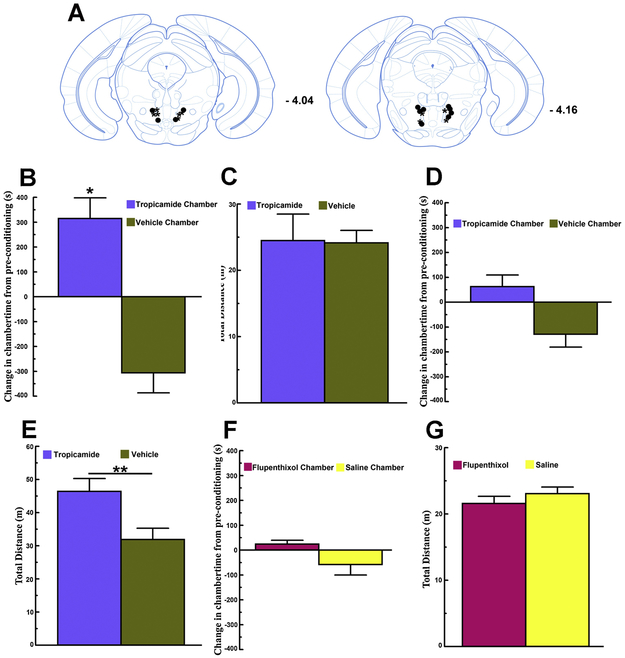Figure 2. RMTg infusions of the M4 muscarinic receptor antagonist Tropicamide lead to the acquisition of conditioned place preference but do not increase locomotor activation.
A. Bilateral RMTg injection sites for mice used in Tropicamide CPP studies (n = 5; asterisk symbols) and for mice used in Tropicamide CPP studies involving concurrent systemic pharmacological blockade of dopamine signaling (n = 6; solid circles). B. RMTg Tropicamide infusions result in the acquisition of conditioned place preference (* p < 0.05 [single-sample t-test: Tropicamide chamber difference score vs. 0]). C. By contrast, in the same mice locomotor activity measured within RMTg Tropicamide infusion and RMTg vehicle infusion conditioning chambers did not differ. D. Systemic pretreatment with the broad-spectrum dopamine receptor antagonist flupenthixol (0.08 mg/kg, i.p., given 1 hr prior to RMTg Tropicamide infusion conditioning sessions) prevents the acquisition of CPP induced by RMTg Tropicamide infusions (n = 6). E. By contrast, in the same mice locomotor activity measured within the RMTg Tropicamide infusion conditioning chamber following flupenthixol pre-treatment was significantly greater than locomotor activity measured within the RMTg vehicle infusions conditioning chamber following saline pre-treatment (** p < 0.01 [flupenthixol/Tropicamide vs. saline/vehicle chamber]). F. The dose of systemic flupenthixol used has no motivational effects on its own. Neither conditioned place preference nor conditioned place aversion are observed in mice (n = 7). G. Locomotor activity measured within the flupenthixol and saline conditioning chamber does not differ. All error bars represent ±SEM.

